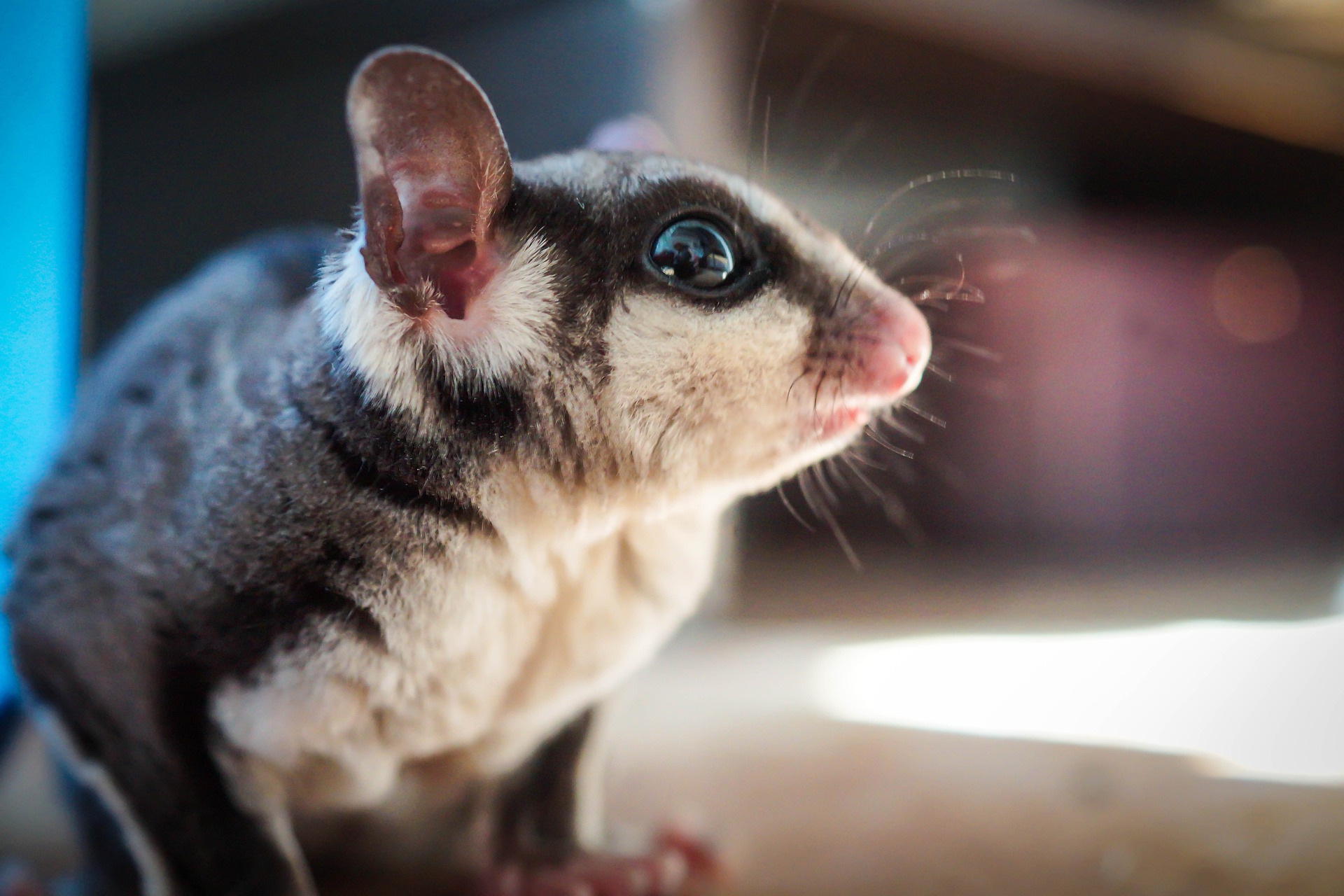A member of the marsupial family, sugar gliders are little, infamous, yet adorable creatures. As members of the same kangaroo family, they are also similar in appearance, with females possessing a pouch that serves as a place to rear their young.
Because they can glide reasonably far with their arms open, they are known as gliders. Male average weight spans from 100 to 160 grams, and female average weight is between 80 and 130 grams. If trained and carefully watched, sugar gliders make charming and sociable pets.
Table of Contents
Sugar Glider Price in India
In India, the cost of a sugar glider can range from Rs. 15,000 to Rs. 20,000. One sugar glider costs Rs. 18,000 on average, but prices might vary based on a variety of factors, including where you live, whether you’re purchasing from a breeder or a pet shop, and more.
Sugar Glider Price according to cities
| Kerala | Rs. 20,000 |
| Chennai | Rs. 15,000 |
| Kolkata | Rs. 18,000 |
Is Sugar Glider A Legal Pet?
There are various rules in various places about the requirements for stroking a “Sugar Glider.” India allows people to keep sugar gliders as pets.
Temperament And Behavior Of Sugar Glider
- An energetic, sociable, and lively creature is the sugar glider. Though little, they are really adorable. A lot of care and attention must be given to them because they are also quite sensitive. To keep your active pet occupied, give them room to climb and toys to play with. Running a wheel is also a good idea.
- By barking, hissing, and crabbing noises, they communicate their wants. You will comprehend these sounds as you become familiar with your pet.
- When they are playing cheerfully or when they are scared or irritated by anything, they frequently bite or scrape with their teeth.
Diet Of Sugar Glider
Sugar gliders in the wild eat insects, eucalyptus tree sap, pollen, nectar, and pollen. If you are petting a Sugar Glider while it is in its habitat, you must feed it. A balanced, healthy diet is essential to preventing the many health problems that an unbalanced diet can cause in your pet. It is advised to feed them in the proportion 50:25:25.
50 percent of this should come from the nectar source (a commercially packaged food source), 25 percent should come from insect protein (also a commercially packaged food source), and the remaining 25 percent should come from fruits and vegetables. If there are pesticides in your pet’s food, it will be detrimental to their health.
Housing And Care For Sugar Glider
- You must take careful care of Sugar Gliders when it comes to housing and care. To make it easier for them to climb, the cage for sugar gliders needs to be big and well-heighted. 20 x 20 x 30 inches is the suggested cage size for one Sugar Glider.
- Make sure the cage bars are tightly constructed to prevent this tiny critter from escaping. Cleaning their bedding and replacing the branches you provide them to climb require daily cage maintenance.
- Additionally, rotate the position of the toys in their cage so they never become bored with them. To give your pet a variety of foods to pick from, their cage should feature a water dish and several food dishes.
Common Health Issue
You need to be aware of a few typical health problems that your little glider could experience. Several of the typical health issues include…
- Dehydration,
- Parasites,
- Giardia,
- Bacterial Infection,
- Pesticide Poisoning,
- Hind Leg Paralysis/ Calcium Deficiency,
- Urinary Tract Infections,
- Respiratory Infections,
- Nutritional Dystrophy.
The Grooming Of Sugar Glider
Because they do not require human assistance, sugar gliders are referred to as self-cleaning animals.
- Fur:
They have thick, soft hair all over their body, which keeps mites away from them. Until veterinarian advised to give bath to Glider does not required your little friend a bath.
- Teeth :
They can easily chew their solid food because to their small, sturdy teeth. When a person’s diet is lacking in sufficient nutrients, it can often be seen in their teeth. Make sure to provide them a balanced diet and schedule regular vet visits to check on their well-being.
- Nails :
Sugar Gliders’ nails are delicate and should only be handled carefully. They have two fingers on the back of the foot and five fingers on the front of their little paws.
For the small species, its paw works well as a natural comb and keeps it well-groomed. Your pet’s nails need to be carefully trimmed to prevent them from becoming caught in objects like toys or other hazards that could harm them. Prior to the procedure, you can also have a vet cut their nails.
Do Pet Sugar Gliders Bite?
- Yes, sugar gliders do occasionally bite. Their biting may be an act of self-preservation and panic. Although their biting is not particularly strong and barely hurts, it does happen on occasion.
- When you first meet a Sugar Glider, you must gain their trust and become accustomed to them. When you first bring a pet home, be careful not to scar it. Both new, strange odours and human hands pose a concern to these creatures. When playing and grooming you, sugar gliders have been known to lightly lick and bite you.
Frequently Asked Questions (FAQ):
Gliders have almost no fear of any land-dwelling creature because they are aboreal (tree-dwelling). Your other pets’ dislike of your glider will cause you more problems than the other way around. So that they are secure and separate from other household pets like a cat or dog, gliders should always be kept in a cage, preferably on a high stand. Make sure the other pet are either in a separate room or kept at a safe distance when handling your glider outside of the cage. Never put your sugar glider in danger or put them under stress by placing them near another hostile animal.
More than one glider should be kept together, Gliders are social animals in the nature, and in captivity, they appear to be considerably healthier and happy when living in groups. Gliders are able to adjust to one another’s presence and will quickly form close friendships. The ideal pairing for breeding is one male and two females. It is not advised to pair more than one male with just one female.






